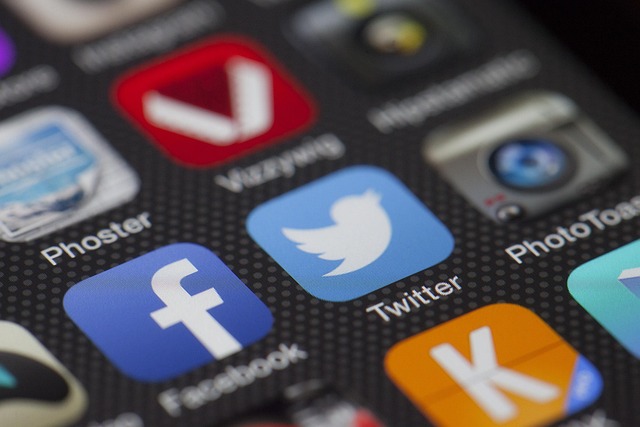In the digital age, the reach of an individual can span continents in seconds, and the voices that resonate are often those of influencers. Their capacity to shape perceptions, drive consumer behavior, and even shift cultural norms has become a cornerstone of modern marketing. Yet, with great reach comes great responsibility. Influencers’ influence extends beyond product recommendations; it permeates how we communicate, engage, and behave online. As technology evolves, so too does the need for a clear set of etiquette guidelines that honor both the creator and the community they serve.
The Rise of Digital Voices
From the early days of blogs to the current era of short‑form video platforms, digital content creators have steadily gained legitimacy as cultural arbiters. Initially perceived as hobbyists, many influencers now command multi‑million‑follower followings and enjoy endorsement deals that rival traditional advertising contracts. This trajectory is not accidental; it is rooted in a genuine ability to connect authentically with niche audiences, to narrate stories in a relatable manner, and to present products and ideas as part of everyday life. Their influence is thus both organic and measurable, quantified through engagement metrics and sales funnels.
- Authenticity: Audiences trust personal narratives over scripted ads.
- Community building: Influencers foster loyalty through consistent interaction.
- Trendsetting: Viral content often originates from an influencer’s creative output.
Technology Etiquette Defined
Technology etiquette, or “techno‑politeness,” refers to the unwritten norms that govern respectful and effective interaction in digital environments. Unlike face‑to‑face etiquette, which relies on visual and auditory cues, online etiquette hinges on tone, timing, and context. In the realm of social media, this translates into mindful messaging, timely responses, and an awareness of platform‑specific conventions. As influencers’ influence expands, these norms evolve in tandem, setting expectations for both creators and consumers. The digital etiquette landscape is now a living document, constantly updated by emerging platforms, user demographics, and technological capabilities.
Social Trends Shaped by Influencers
Influencers play a pivotal role in accelerating social trends. A single endorsement can transform a niche hobby into a mainstream craze. For instance, sustainable fashion, plant‑based diets, and minimalist living have all seen rapid uptake due to influencer advocacy. Moreover, technology trends—such as augmented reality filters, e‑commerce integrations, and live‑stream shopping—have proliferated through the strategic use of influencer platforms. These trends are not purely aspirational; they often embed themselves into daily habits, reshaping how people shop, learn, and even communicate. Consequently, influencers’ influence serves as both a mirror and a catalyst for cultural evolution.
Guidelines for Responsible Engagement
Given the profound impact of influencers’ influence, establishing clear guidelines is essential. These guidelines should address transparency, authenticity, and digital wellness. By adhering to them, influencers can safeguard their credibility while empowering their audiences to navigate the digital realm responsibly. Below are key pillars for a constructive approach.
Respecting Digital Boundaries
Digital boundaries encompass both personal privacy and audience expectations. Influencers should be cautious about oversharing personal data, which can lead to exploitation or harassment. They should also respect the limits of platform policies, avoiding content that infringes on intellectual property or violates community standards. A respectful approach entails clear separation between personal life and brand messaging, setting transparent guidelines for user interactions, and moderating comments to prevent harassment.
“When you set clear boundaries, you create a safe space for conversation and authenticity.”
Transparency in Sponsored Content
One of the most debated aspects of influencer culture is sponsored content. The Federal Trade Commission (FTC) and similar regulatory bodies worldwide mandate disclosure of paid partnerships. However, transparency extends beyond legal compliance; it involves honest disclosure of the product’s features, potential drawbacks, and the influencer’s genuine experience. This fosters trust and mitigates the perception that endorsements are solely financially motivated. By adopting consistent disclosure practices, influencers reinforce their integrity and contribute to a healthier marketplace.
Promoting Digital Literacy
Digital literacy is the ability to critically assess online information, navigate privacy settings, and responsibly share content. Influencers can leverage their platforms to educate audiences about phishing scams, algorithmic bias, and data ownership. By incorporating short tutorials, myth‑busting segments, or Q&A sessions, they empower followers to become discerning digital citizens. This proactive stance not only elevates the influencer’s role from promoter to educator but also fortifies the broader community against misinformation and exploitation.
Future Directions: Ethical Amplification
The trajectory of influencer culture is moving towards greater ethical awareness. As audiences demand authenticity, we see a rise in micro‑influencers who prioritize niche expertise over follower count. Additionally, emerging technologies like blockchain are being tested to verify authenticity and reward content creators fairly. These innovations could reshape the economics of influence, creating a more equitable ecosystem where influence is measured by genuine impact rather than vanity metrics.
- Blockchain for content verification and royalty tracking.
In sum, influencers’ influence is a powerful tool that can both uplift and mislead. The evolution of technology etiquette ensures that creators wield their reach responsibly, respecting both their audiences and the broader digital ecosystem. By embedding transparency, boundary‑respect, and digital literacy into their practice, influencers can shape trends that are not only popular but also ethically sound. As we continue to navigate an increasingly interconnected world, these standards will be pivotal in maintaining trust, authenticity, and mutual respect across all digital platforms.




